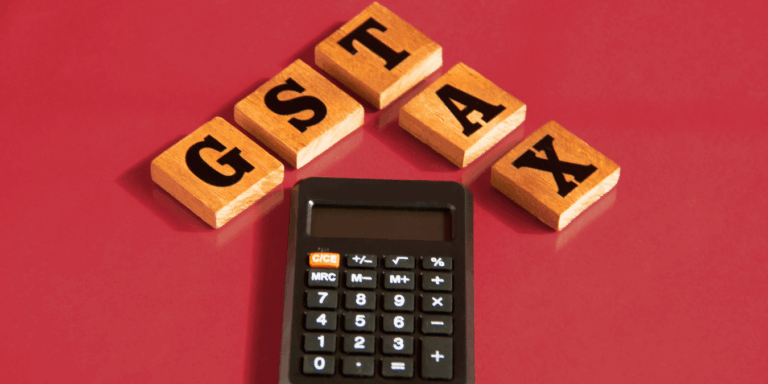
“How to save money with the new income tax regime in ITR filing 2025. Learn about 3 key deductions—standard deduction, NPS, and home loan interest—to maximize savings. Stay updated on tax slabs, deadlines, and expert tips to reduce your tax liability effectively. Read now!”
The new income tax regime introduced in the Union Budget 2025 has brought significant changes to the way taxpayers in India file their Income Tax Returns (ITR). With simplified tax slabs and fewer deductions, the new regime aims to make tax filing more straightforward. However, there are still some key deductions that can help you save money and maximize your savings. In this blog post, we will explore three crucial deductions under the new income tax regime for FY 2025-26 that you should be aware of.
Understanding the New Income Tax Regime
The new income tax regime offers lower tax rates but eliminates many of the deductions and exemptions available under the old regime. Here are the revised tax slabs for FY 2025-26 (AY 2026-27):
- Up to ₹4,00,000 : NIL
- ₹4,00,001 – ₹8,00,000 : 5%
- ₹8,00,001 – ₹12,00,000 : 10%
- ₹12,00,001 – ₹16,00,000 : 15%
- ₹16,00,001 – ₹20,00,000 : 20%
- ₹20,00,001 – ₹24,00,000 : 25%
- Above ₹24,00,000 : 30%
Deductions Under the New Tax Regime to Maximize Savings
Despite the removal of many deductions, there are still some that can help reduce your taxable income. Let’s delve into three key deductions that can help you save money under the new regime.
One of the most significant deductions available under the new income tax regime is the standard deduction. For FY 2025-26, the standard deduction has been increased to ₹75,000 for salaried individuals and pensioners. This deduction directly reduces your taxable income, making it a valuable tool for tax savings.
Example: If your annual salary is ₹10,00,000, you can claim a standard deduction of ₹75,000, reducing your taxable income to ₹9,25,000.
2. Employer’s Contribution to NPS
The National Pension System (NPS) is a government-backed pension scheme that offers tax benefits under both the old and new tax regimes. Under the new regime, you can claim a deduction for your employer’s contribution to NPS up to 14% of your salary for central government employees and 10% for other employees under Section 80CCD(2).
Example: If your annual salary is ₹12,00,000 and your employer contributes 10% to NPS, you can claim a deduction of ₹1,20,000.
3. Leave Encashment Exemption
Leave encashment is another area where you can save taxes under the new regime. The exemption limit for leave encashment has been increased from ₹3,00,000 to ₹25,00,000. This is particularly beneficial for employees who receive a significant amount of leave encashment upon retirement or resignation.
Example: If you receive ₹10,00,000 as leave encashment, the entire amount will be exempt from tax under the new limit.
Maximizing Your Savings
While the new income tax regime simplifies the tax filing process, it is essential to be aware of the available deductions to maximize your savings. Here are some additional tips to help you make the most of the new regime:
- Plan Your Investments: Although many traditional deductions like Section 80C are not available under the new regime, you can still invest in tax-saving instruments like NPS to reduce your taxable income.
- Keep Track of Exemptions: Make sure to keep track of exemptions like leave encashment and standard deduction to ensure you are not missing out on any tax benefits.
- Consult a Tax Advisor: If you are unsure about which deductions apply to you, consider consulting a tax advisor to help you navigate the new regime and optimize your tax savings.
Key Considerations for ITR Filing 2025
While these deductions can help you save money, it’s essential to keep the following points in mind while filing your ITR for 2025:
- Choose the Right Regime: Before filing your ITR, evaluate whether the new tax regime is more beneficial for you compared to the old regime. Use online tax calculators to compare your tax liability under both regimes.
- Maintain Proper Documentation: Ensure that you have all the necessary documents, such as Form 16, interest certificates, and investment proofs, to claim these deductions.
- File Your ITR on Time: The deadline for filing ITR for the financial year 2024-25 is likely to be July 31, 2025. Filing your return on time will help you avoid penalties and interest.
- Seek Professional Help: If you’re unsure about which regime to choose or how to claim deductions, consider consulting a tax professional.
Latest Trends and Data on ITR Filing
The landscape of Income Tax Return (ITR) filing in India has seen significant changes and growth in recent years. As we move through 2025, several trends and data points highlight the evolving nature of tax compliance and the increasing number of taxpayers. Here are some of the latest trends and data on ITR filing for the financial year 2024-25:
Surge in ITR Filings
As of February 28, 2025, over 9 crore taxpayers have filed their income tax returns for the financial year 2024-25. This marks a substantial increase in the number of filings compared to previous years. The growth in ITR filings can be attributed to several factors, including increased awareness, improved digital infrastructure, and the government’s push for greater tax compliance.
High-Income Taxpayers
Among the 9 crore taxpayers, over 4.68 lakh individuals have reported an annual income exceeding ₹1 crore. The breakdown of high-income taxpayers is as follows:
- ₹1 crore – ₹5 crore: 3.89 lakh taxpayers
- ₹5 crore – ₹10 crore: 36,274 taxpayers
- Above ₹10 crore: 43,004 taxpayers
This data indicates a growing number of high-income earners in the country, reflecting economic growth and increased income levels.
and the varying levels of tax compliance across different states.
Growth in Different ITR Categories
The growth in ITR filings has been observed across various categories:
- ITR-1: 0.11% increase
- ITR-2: 33.89% increase
- ITR-3: 15.50% increase
- ITR-5: 6.46% increase
- ITR-6: 5.59% increase
The significant rise in ITR-2 filings suggests that more individuals with multiple sources of income, such as capital gains, are filing their returns.
E-Verification and Refunds
Out of the 9.11 crore ITR filings, 8.56 crore returns have been successfully e-verified. The Income Tax Department has issued refunds worth ₹3.92 lakh crore, reflecting the efficiency and effectiveness of the e-filing and e-verification processes.
Direct Tax Collections
The direct tax collections for the period April 1, 2024, to March 16, 2025, witnessed a robust growth of 16.2%, amounting to ₹25.86 lakh crore. This growth underscores the increasing tax base and the government’s efforts to enhance tax compliance.
Final Thought
The new income tax regime for FY 2025-26 offers a simplified tax structure with lower rates but fewer deductions. By understanding and utilizing the available deductions like the standard deduction, employer’s contribution to NPS, and leave encashment exemption, you can save money and maximize your savings. Stay informed and plans your taxes wisely to make the most of the new regime. Remember to evaluate your financial situation carefully, maintain proper documentation, and file your ITR on time to avoid penalties.
As the tax landscape continues to evolve, staying informed about the latest changes and trends is crucial. By making informed decisions and optimizing your tax strategy, you can ensure a stress-free ITR filing experience and keep more of your hard-earned money in your pocket.
-

The $68 Billion Rupee Trap: How Stablecoins Could Silently Hijack India’s Financial Freedom
-

Why Your Safe Salary is Actually the Most Dangerous Gamble of 2025
-

The ₹1 Crore Trap: Why High Earners Are the New “Poor” and How to Escape!
-

The ₹8,600 “Glitch”: Did Starlink Just Reveal Its Hand or Was It All a Mistake?





























